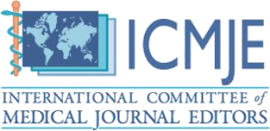PANDEMIC, LAW, AND INDIGENOUS LANGUAGES IN PAKISTAN
DOI:
https://doi.org/10.51611/iars.irj.v11i1.2021.150Keywords:
language policy, Pandemic, mother tongue, LawAbstract
Pakistan is a multilingual state with 74 languages (Siddiqui, 2019), with Urdu being its national language while English is its official language (Article 251 of the Constitution of the Islamic Republic of Pakistan). However, the linguistic diversity, as per the law, has not been given proper status in Pakistan (Rahman, 2002). In the wake of Covid-19 pandemic, the role of medical health professionals, local police officers, media persons and educationists to create an awareness about the precautionary measures to fight Covid-19 among the indigenous communities in different regions of Pakistan is important. However, there is no practice prescribed in the law, to disseminate awareness in the local languages. Moreover, as most of the lexical items regarding the pandemic have been borrowed, the shift to local languages is more than challenging. In urban areas, indigenous communities are aware of the precautions to be taken during this pandemic as they use the mainstream languages (Ali, 2017 & Abbasi, 2019.) However, in the rural and northern areas of Pakistan this is not so prevalent. Some language activists and concerned members of the community in different parts of the state took this opportunity to educate the masses and started an awareness campaign about coronavirus pandemic in local languages (posters in local languages and short video messages on social media and YouTube). Yet, linguists and community members have not been able to work with many indigenous languages, which Rahman (2004) lists in his study, and these speech communities urgently need the required information in their respective heritage languages. Such small steps by community members and NGOs in providing necessary information in local languages suggest that proper education in the mother tongue can protect communities in times like this. The government has to protect endangered and indigenous languages by an effective law-making process that actively encourages the use of local languages and helps provide information in their respective languages in such situations as this pandemic.
Downloads
References
Abbasi, Sanullah. (2020). Policing in Covid-19 Pandemic Situation. University of Sindh, Jamshoro.
Abbasi, M. H. (2019). Language Shift and Maintenance: A Case Study of Sindhi-Speaking Urban Youth. (MS Thesis, Department of Humanities, NEDUET, Karachi).
Ahmed, Khaleed. (2020). The English Medium Problem. Newsweek.
Ahmad, Naseer. (Feb 4, 2017). Mother and the mother tongue. Dawn.com
Ali, S. S. (2017). Language Shift and Ethnolinguistic Vitality: a sociolinguistic study of Indigenous minority language speakers in Karachi. (PhD thesis, Department of English, UoK)
Alvi, Mumtaz. (2020). Decision to lockdown forced by Elite- PM Imran Khan. Thenewscom.pk. Retrieved from https://www.thenews.com.pk/print/652173-decision-to-lockdown-forced-by-elite-imran
Census. (2017). Census report of Pakistan. Islamabad: Population Census Organization Statistics Division. Government of Pakistan.
Constitution of Pakistan. (1973). The National Assembly, Government of Pakistan. Retrieved from http://www.na.gov.pk/uploads/documents/1333523681_951.pdf.
Daily Pahenjiakhbar (8th April, 2019). Retrieved from www.pahenjiakhbar.com.
Daily Jang Newspaper. (March-June, 2020) Headlines.
Daily Kawish Newspaper (March-June, 2020), Headlines. ABC Certified.
David, M. K., Ali. M., & Baloch, G. M. (2017). Language Shift or maintenance: The Case of Sindhi Language in Pakistan. Language Problem & Planning, 41(1), 26-45
Drude, Sebastian. (2020). Covid-19 and minority and lessor known languages. Retrieved from http://www.ogmios.org/blog/covid-19-and-minority-and-lesser-known-languages/
Forum for Linguistic Initiatives (2020). Retrieved from https://fli- online.org/site/?fbclid=IwAR0PmOhhHzq5PDei0AQlMmE9rfO7Mo9BLzfU3nJliaKvKQS1GQCdmB6x1n4
Haider, Irfan. (Sept8, 2015). Supreme Court orders Govt. to adopt Urdu as official language. Dawn.com. Retrieved from https://www.dawn.com/news/1205686
Latif, Aamir (2018). Pakistan several regional languages face extinction. Anadolu Agency. Retried from https://www.aa.com.tr/en/asia-pacific/pakistan-several-regional-languages-face-extinction/1071368
Policing in Covid-19. (2020). Bureau of STAGS, University of Karachi. Retrieved from https://www.facebook.com/bostags
Rahman, T. (2002). Language, Ideology and Power: Language Learning among the Muslims of Pakistan and North India. Oxford University Press: Karachi.
Rahman, T. (2004). Denizens of Alien Worlds: A Study of Education, Inequality and Polarization in Pakistan. Oxford and Karachi: Oxford University Press.
Rahman, T. (2006). Language policy, language vitality and multilingualism in Pakistan. In A. Saxena& L. Borin (Eds.), Trends in Linguistic: Lesser Known Languages of South Asia (pp. 73-106). Berlin: Mouton de Grutyer.
Rahman, T. (2010). Pakistani English.2nd edition. Islamabad: Quaid - i - Azam University.
Siddiqui, Ali Shadid (2019). When a language dies. The News. Retrieved from https://www.thenews.com.pk/print/423539-when-a-language-dies.
SIL International Retrieved from https://www.sil.org/
Supreme Court of Pakistan (2020), Suo Moto Case Bo 1 of 2020.
Torwali, Zubair (Feb, 20. 2014). Our Language Tragedy: A report from Pakistan. Living tongues. Retrieved from https://livingtongues.org/our-language-tragedy-a-report-from-pakistan/
Zaidi, S.B & Zaki, S. (2017). English Language in Pakistan: Expansion and Resulting Implications. Journal of Education and Social Sciences. 5(1). 52-67.
Downloads
Published
Issue
Section
License
Copyright (c) 2021 Muhammad Hassan Abbasi, Maya David

This work is licensed under a Creative Commons Attribution 4.0 International License.
Author(s) hold complete right on the content of this article. Copyright to the content are governed as per Copyright Policy of the Journal.





















